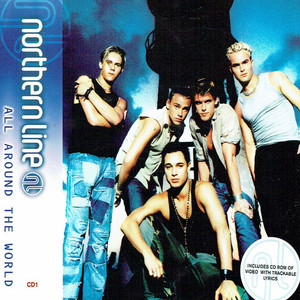Released: 7th June 1999
Writers: Eliot Kennedy / Mike Percy / S Club 7 / Tim Lever
Peak position: #1
Chart run: 1-2-5-5-6-11-16-18-24-28-34-42-56-65-72
It may seem a somewhat bizarre notion, but S Club 7 were arguably – at least initially – not the most important aspect in the launch of S Club 7. What Bring It All Back really marked was Simon Fuller’s return to chart prominence having been sacked by the Spice Girls two years earlier.

Much had changed in the pop industry during that time, and S Club 7’s launch in many ways was a hybrid of the key elements for success. The market for girl groups and boy bands was heavily saturated. But boy/girl groups…well, there was Steps. Elsewhere, the Fuller dynasty had already turned the Spice Girls into a box office phenomenon (commercially, if not critically). But movies are expensive to make; the positive reception to Cleopatra’s Comin’ Atcha TV series earlier that year created a much more appealing alternative. Why spend money getting pop fans to come to you when instead you could go directly to their living rooms? Bring It All Back was thus much more than a debut single; it marked a full-on simultaneous multimedia takeover by Simon Fuller via S Club 7.

The premise of Miami 7 was to position S Club 7 as a struggling pop act in America. While one may initially have questioned whether the group needed to contain seven members, the show allowed Kim Fuller to create distinct personalities for Tina, Jon, Paul, Hannah, Bradley, Rachel and Jo in much the same vein as those earlier adopted by the Spice Girls. And it’s a testament to how well the project fared because nobody ever really questioned the mathematics behind S Club 7, even when lead singers naturally emerged and became more prominent vocalists. Bring It All Back was installed as the theme tune to Miami 7 and it was only a matter of time before the track was released as a single in its own right.

While Bring It All Back is an undeniably catchy pop song, it’s also a mission statement. S Club 7 certainly weren’t exempt from the pop music tropes of love and heartbreak; but more so than any other act of the time, the commonly recurring topic within their music was empowerment and platonic peer camaraderie, which is what the song is about. The lyrics are a collection of moral affirmations that had probably been heard by most of the group’s target market at some point: “If people try to put you down, just walk on by don’t turn around” and “Imagination is the key, ’cause you are your own destiny”. S Club 7’s launch might have been masterfully calculated, but launching a group with the ethos of acceptance and positivity is not a bad thing.

In terms of the vocals, the song is carved fairly consistently to give the four ladies a turn in the spotlight. Jo O’Meara and Rachel Stevens emerge early on as the more prominent vocalists, but Tina Barrett and Hannah Spearritt also land half a verse each (it’d be mid-2003 before they got a similar opportunity). As bubblegum pop songs go, Bring It All Back ticks all the boxes. The track zips along at a pace that ensures its ’90s teen audience – with increasingly short attention spans – are continually occupied with catchy “Na na na” post-choruses, shifts in melody and amplified beats announcing the next element, such as the lead-in to the chorus: “So don’t you stop trying”.

Bring It All Back’s finest moment though is reserved for the final minute when it drops – you guessed it – an incredible key-change. The lead-up is glorious, as a chorus plays out with minimal production and gradually builds back, before catapulting at the last minute into a completely different key, with ad-libs that tear a hole in the fabric of pop music. Jo O’Meara’s soaring ad-libs are the most technically impressive element, but it’s Rachel Stevens’s “Don’t STOP; don’t STOP” ad-libs that fully slayed back in the ’90s. The one downside to Bring It All Back’s euphoric climax is that it renders everything before it somewhat functional; it’s still a perfectly enjoyable pop song, but perhaps more so than any other song in the S Club 7 canon, it’s a means to a very satisfying end.

As if to further emphasise the synergistic approach adopted by Bring It All Back, the accompanying music video is part performance and part Miami 7 compilation. It works incredibly well, and kudos to whoever was tasked with the painstaking job of finding clips from the 13 episodes of the show that matched the energy and tempo of the video. It ties together very effectively. Spliced together with a group dance sequence, the Bring It All Back video captures S Club 7’s personality and neatly positioned them as an even sunnier, aspirational alternative to the existing pop acts of the time. It wasn’t a high concept or cost debut video, but in terms of impact, it had the desired effect, going into heavy rotation on the music channels and no doubt steering viewers who weren’t already hooked on Miami 7 to seek it out.

By the time Bring It All Back was released, there was no question it would be a hit; only by what margin. And what better way to firmly assert S Club 7 as a dominant pop force than with a chart battle that generated headlines? Going up against Madonna’s Beautiful Stranger was a bold move, but it paid off. Bring It All Back shifted 190,000 copies (55,000 more than Madonna) to debut at #1. The track was a massive success, selling 623,600 copies and ending 1999 as the 11th biggest hit of the year. Since then, its total sales have further improved; the addition of streaming and downloads means Bring It All Back is now a million-seller (1.036 million copies) and S Club 7‘s third biggest single overall.

Pop music had a significant new act, and Simon Fuller was firmly back where he belonged. More importantly, there’s a sense that – for better or for worse – this time he was firmly in control and had a long-term plan to stay there.



